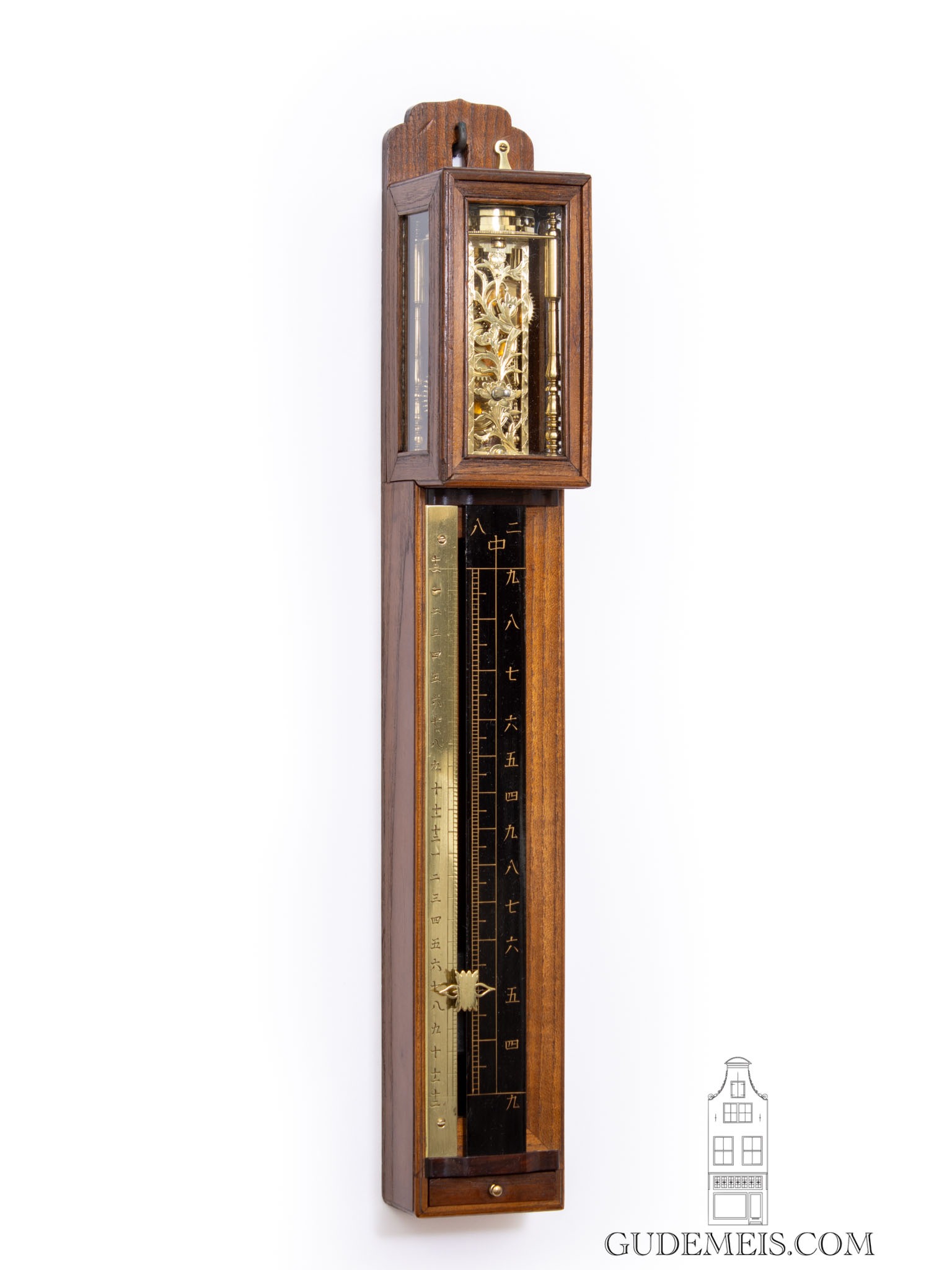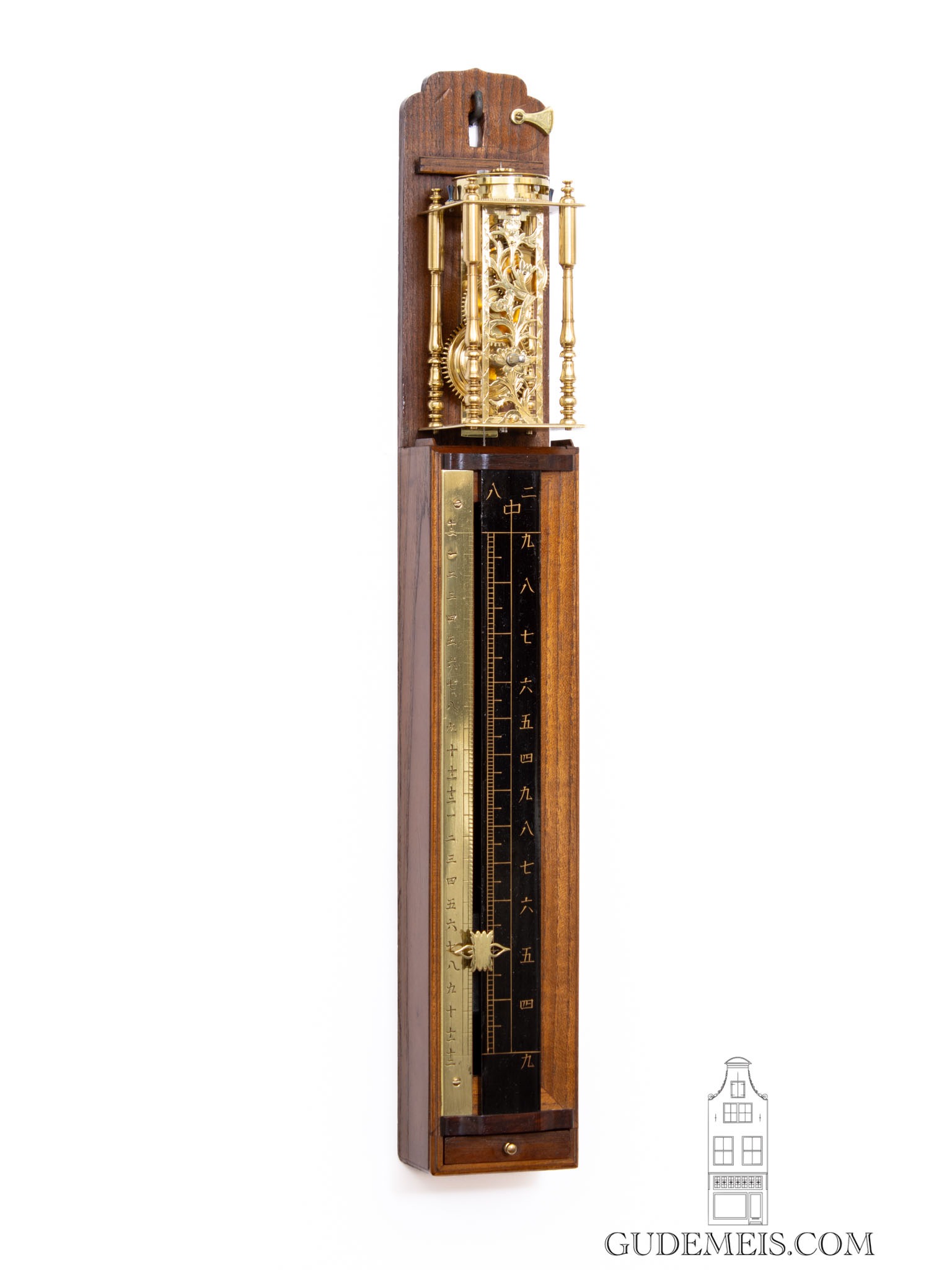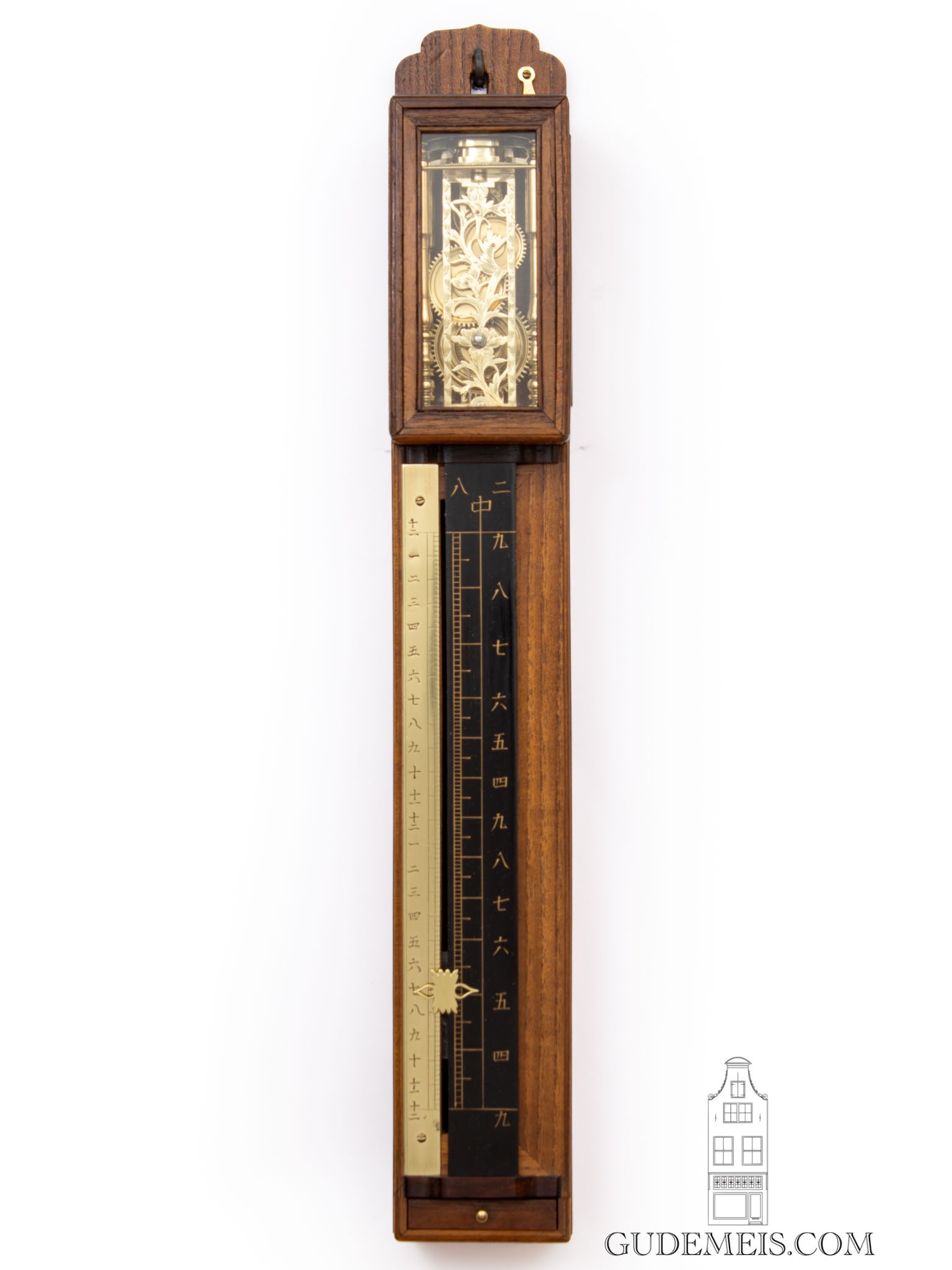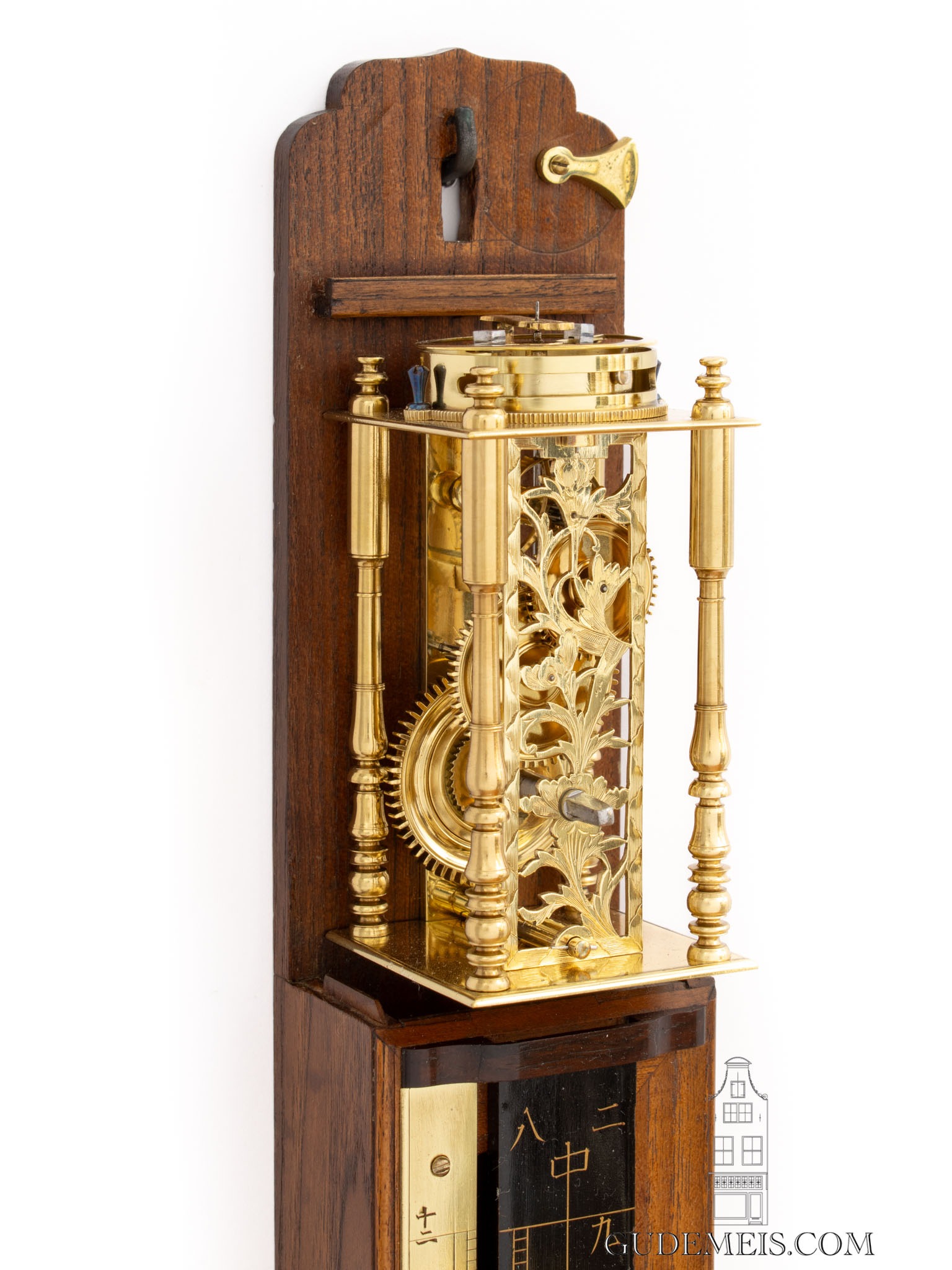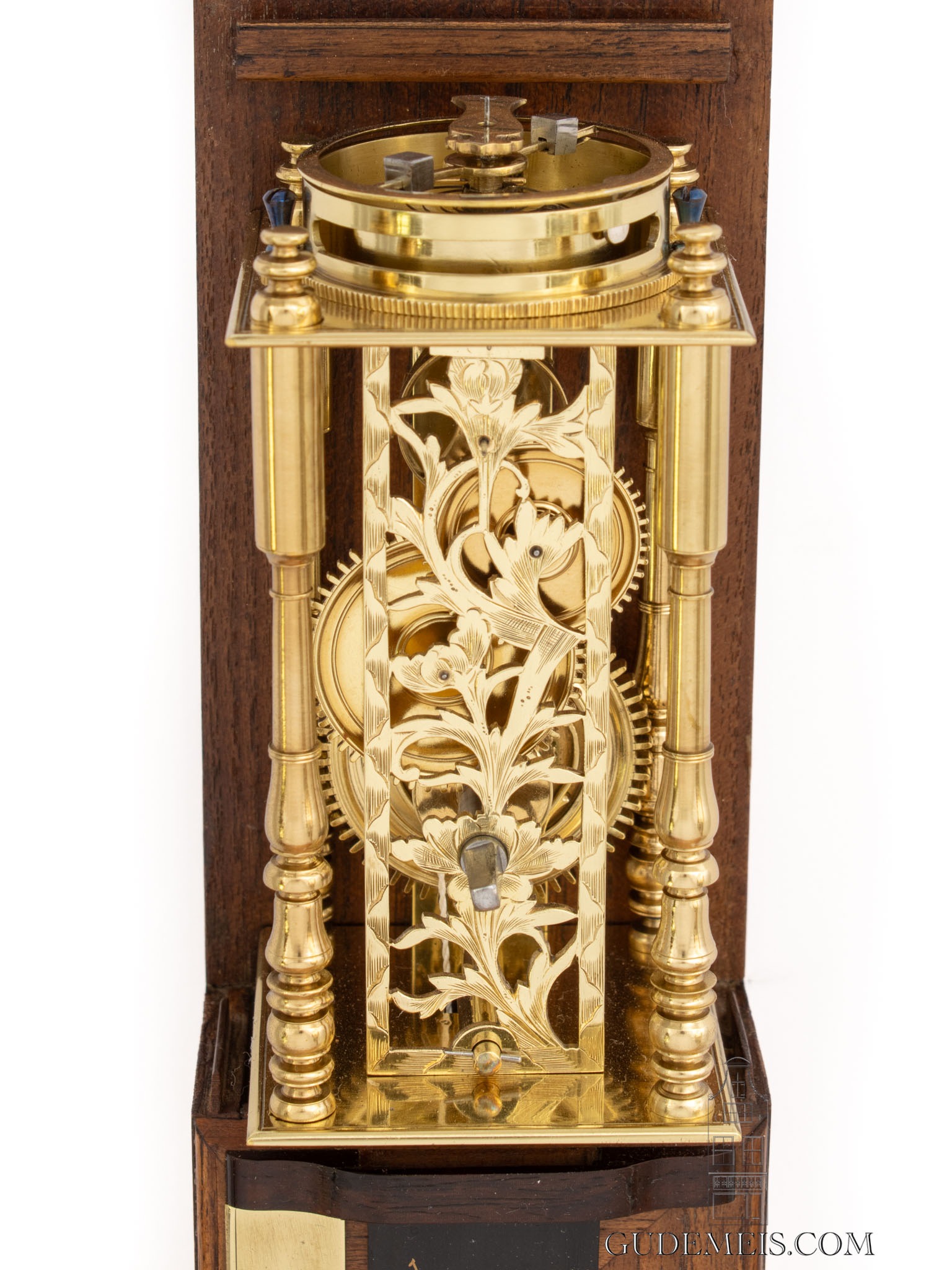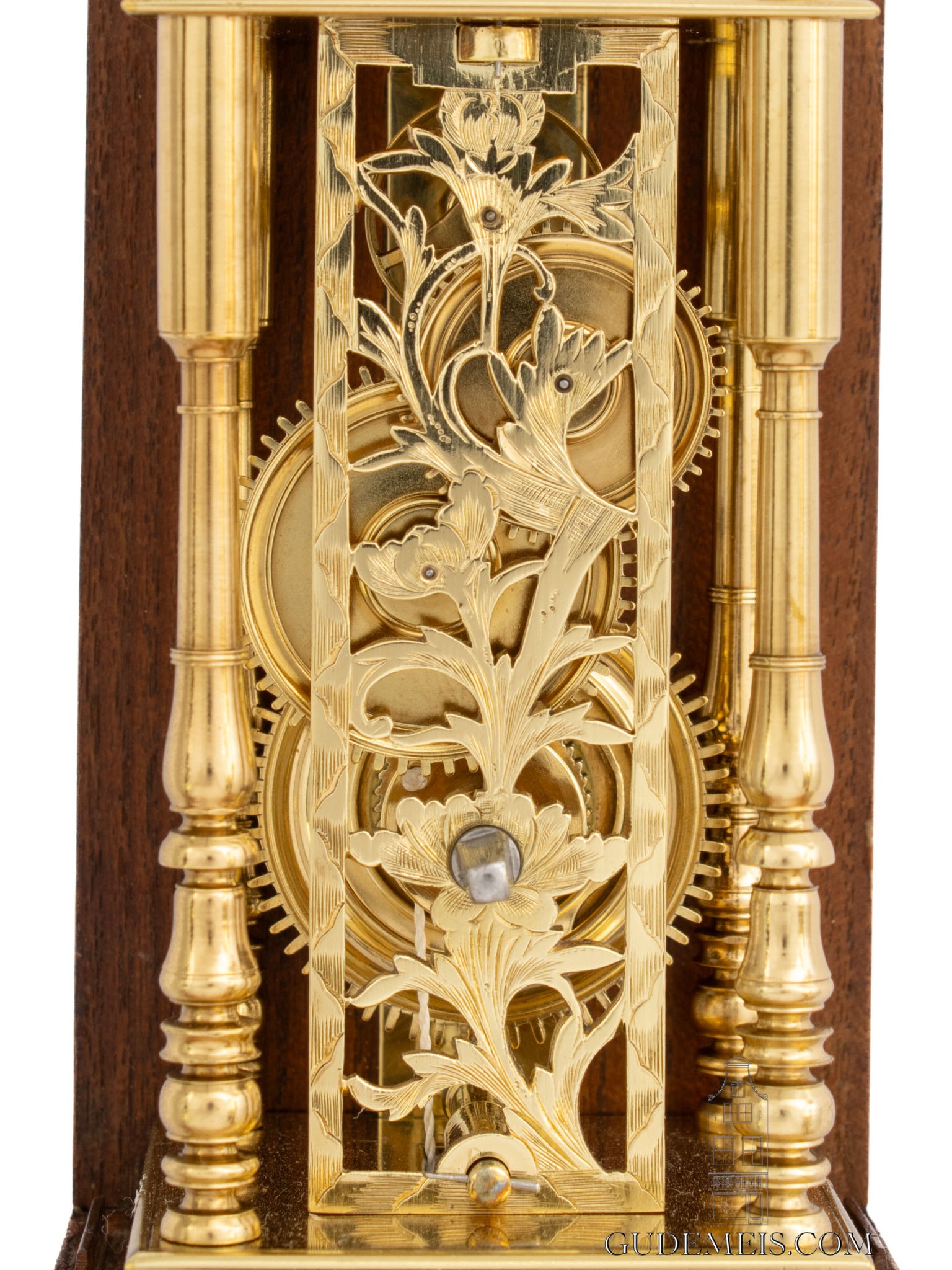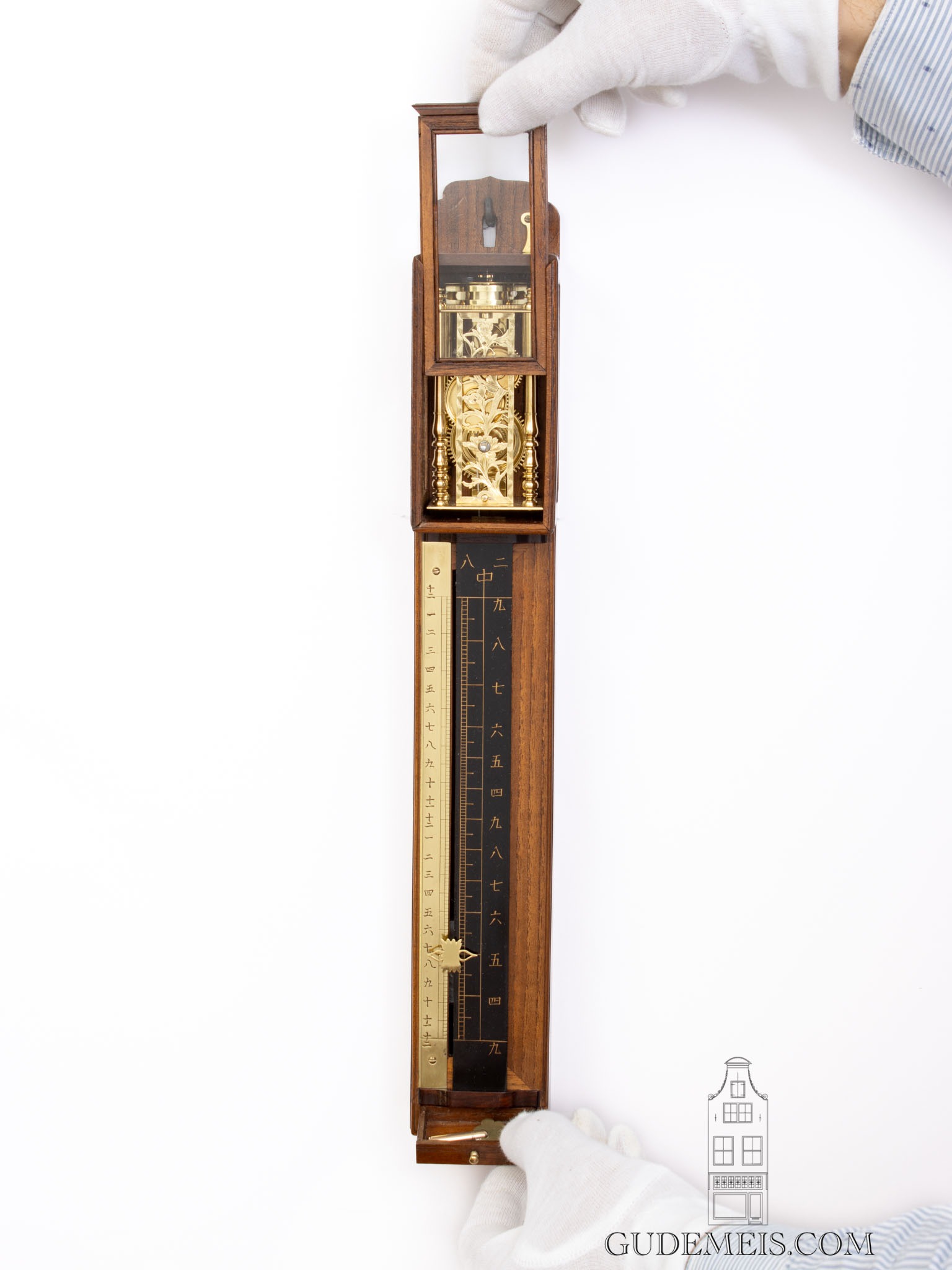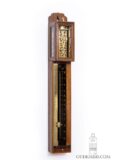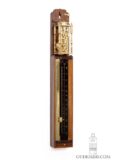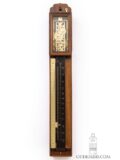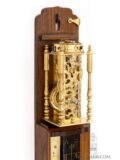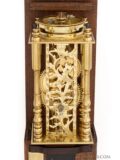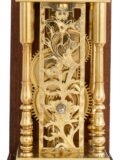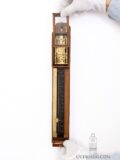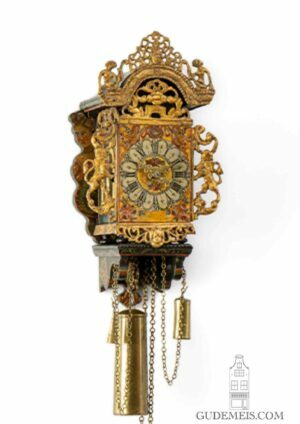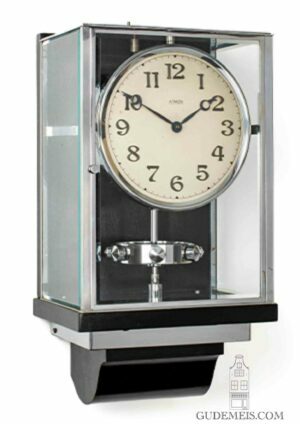A Japanese wisteria ‘shaku-dokei’ wall clock, circa 1840.
Description
Shaku dokei
This type of Japanese wall clock is referred to as ‘shaku=dokei’. A ‘shaku’ is unit of measure with the length of about a foot. ‘Dokei’ is the Japanese term for clock. Since most of these clocks are of this size the name ‘shaku=dokei’ must have stuck. The hand or pointer that indicates the time is fixed to the weight driving the movement. With the movement running, the weight with pointer, descends along the numerals on the lower part of the case. Because the construction is relatively simple these clocks could be made cheaper and were affordable for more people. Until 1873, the Japanese used ‘temporal hours’. This means that the day, and first hour, starts at sunrise. And that the day, and last hour ends at sunset. Both day-time and night-time was divided into six toki (unit of time). It also means that length of the toki changes with the changing of seasons. Therefore the Japanese clocks needed to be adjusted to the ever changing length of the toki. With early ‘shaku-dokei’ the numerals can be moved. With this clock came a set of dials that needed to be changed every two weeks. With abolition of the temporal hours the extra dials became obsolete. The dial with the average time was kept To keep the clock useful. Not only the interesting history of this object makes it special. It is the skilfully made case and movement that are testiment of the artistry of the Japanese artisans. A beautiful object to hang on the wall.
Chrysanthemums
The weight driven movement has well turned pillars connecting the top and bottom plates and is of day duration. The front plate is finely pierced and engraved with chrysanthemums. The movement is regulated with a plain balance.
Wisteria
The rectangular case is made of wisteria. The front has an engraved brass for average time and a laquered dial. The case has a removable hood with slide-up front panel for winding up the weight with pierced brass hand every day. At the bottom there is a small drawer for the winding key.
